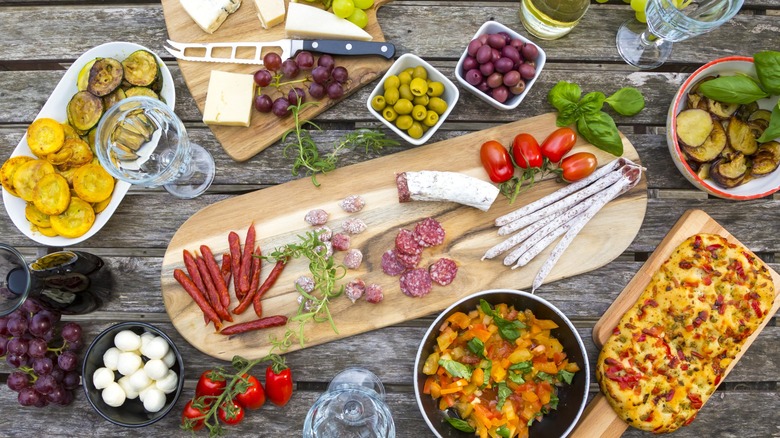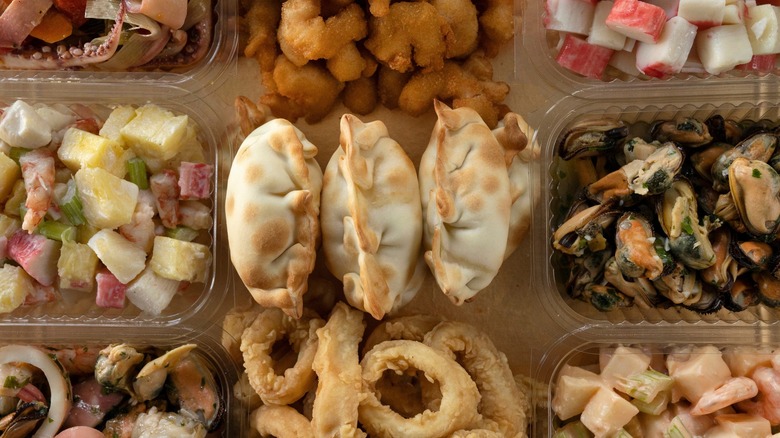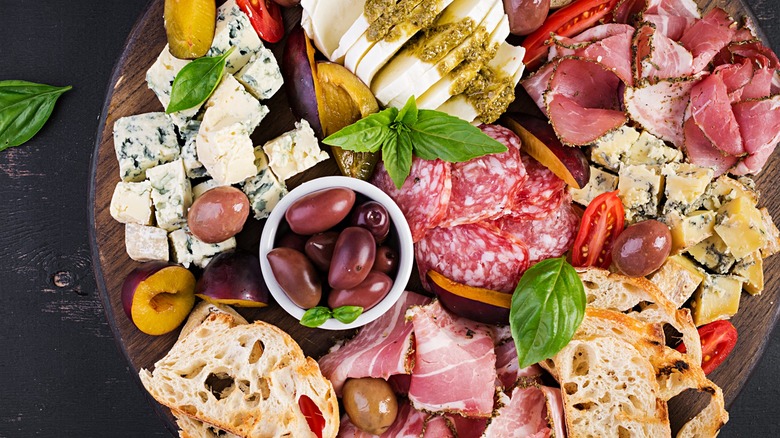What Is Antipasto And What Is Its Purpose?
The moment you sit down at an Italian dinner table, your journey begins with a mosaic of antipasto: olives, artisanal cheeses, cured meats, salted fish, sun-ripened vegetables, bruschetta, and crostini. This vibrant assortment of appetizers, full of color and flavor, awakens your senses and primes you for the meal to come. The Italian word antipasto (plural form is antipasti) translates to "before the meal" and remains an essential part of Italian culinary tradition and hospitality. Traditionally presented family-style on a big, shared platter, antipasti are a carefully curated spread that unfolds a wide range of well-balanced but contrasting colors, flavors, and textures; often featuring a symphony of regional specialties and seasonal ingredients both cold and warm.
The word 'antipasti' appears on the menu at almost every Italian restaurant and has deeply influenced Western dining, becoming nearly synonymous with appetizers despite the fact that the term itself wasn't widely adopted until the late 1800s. However, the tradition of sparking the appetite with shared small dishes has been rooted in Italian food culture since ancient times. In her book "Antipasti," Mediterranean cooking expert and chef Joyce Goldstein traces its origins back to ancient Rome, when people enjoyed antecoena — dishes served before the main course.
Today, antipasti is the most recognized term for this prelude to a meal (though Italians may also call it stuzzichini, meaning "to pick," or assaggi, meaning "little tastes"). Another Southern Italian term, apristomaco, or "stomach opener," also vividly captures the role of antipasti in preparing dinners for the feast to come.
Regional variations of antipasto
In Italy, antipasto varies by region, with distinct styles in the north, central, and southern areas; each displaying an abundance of unique local preferences and specialties. Northern style combines Alpine and Mediterranean flavors with an emphasis on cheeses and cured meats such as Gorgonzola, Asiago, Prosciutto di Parma, Mortadella, and Lombardy's Bresaola. They are often accompanied by balsamic onions, figs, cannellini beans, fennel, and polenta.
Central Italian antipasti emphasize Tuscany's flavors using dishes like burrata with roasted tomatoes, caprese salad with prosciutto, smoked salmon, and assorted meats and cheeses. The beloved crostini (toasted baguette slices topped with spreads like pâté, cheese, or tapenade) often feature fresh vegetables.
Southern Italian antipasti blend Italian and Mediterranean influences showcasing big, bold, seaside flavors emphasizing an assortment of sun-kissed veggies like tomatoes, herbs, creamy cheeses, and seafood. Some iconic dishes include the simple yet vibrant caprese salad made with tomatoes, fresh mozzarella, basil, olive oil, and balsamic vinegar as well as anchovies, mussels, roasted peppers, artichokes, and renowned olives. Sicily's antipasti especially stand out in southern Italy, thriving on the island's sunny climate, rich soil, and abundant seafood. These dishes draw on both mainland Italian and Mediterranean influences. A wide range of delicious antipasti, such as eggplant caponata, are enhanced with raisins, sweet garlic, capers, eggplant, artichokes, and herbs.
Make your own antipasto platter at home
An antipasto platter is the perfect addition to any house party. There are no strict rules for assembling one, just think of it as a party both on the plate and palette. Make it colorful and beautiful, with a mix of flavors and textures that complement and contrast with each other to warmly and generously welcome your guests and open up their appetites.
Just like crafting a charcuterie board, start your antipasto platter with three to four cheeses, it's always a good idea to include a mix of perfectly sliced cheese of the sharp and creamy, soft and hard varieties for intriguing contrast along with some crackers or baguette slices. Next, add essential accompaniments like olives and pickled or marinated vegetables such as peppers, tomatoes, and lemon pickled garlic. Their vibrant, sour, briny flavors easily awaken the taste buds.
For a more personal touch, you can also make your own pickled and marinated vegetables, and it's so easy to pickle them at home! Then, place your cured meats like an artist. Try incorporating a selection of them, from savory and delicate to smoky and spicy — think spicy salami and prosciutto. You can also consider adding tinned fish like anchovies, which offers alternative flavor options for the guests. Finally, add a scattering of dried and fresh fruits and nuts like figs, berries, raisins, pine nuts, and almonds; and finish with a garnish of some lovely fresh parsley leaves. Remember to keep the stems as they are equally precious. Here you have your colorful, delicious antipasti feast on a platter. Buon appetito!


